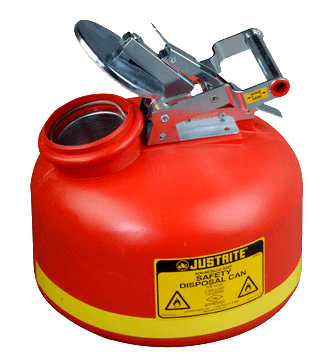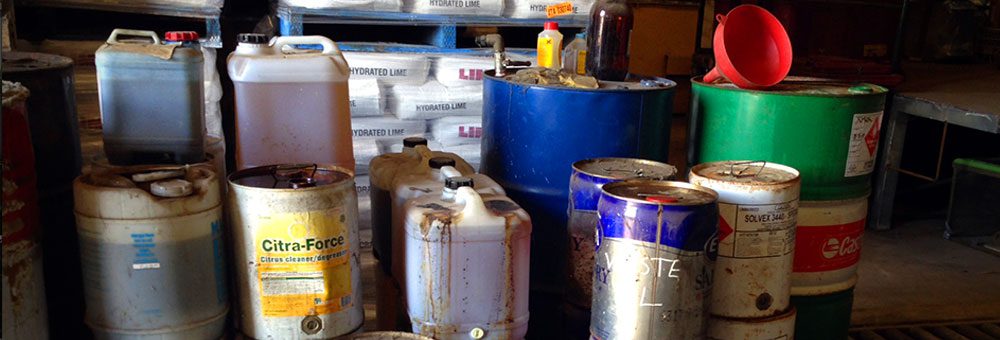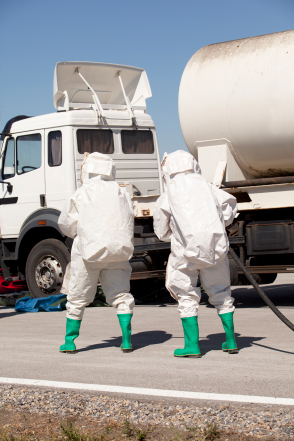Exactly How Fluid Waste Disposal Functions: A Thorough Review of Strategies and Technologies Employed

Introduction of Fluid Waste Types
The complexity of fluid waste kinds necessitates a thorough understanding of their characteristics and ramifications for disposal. Fluid waste can generally be categorized right into several kinds, consisting of commercial, municipal, agricultural, and unsafe waste. Each group shows distinct residential or commercial properties, requiring details management techniques to minimize environmental and health threats.
Industrial liquid waste originates from manufacturing procedures and usually contains a series of contaminants, such as hefty metals, solvents, and organic substances. Community fluid waste, mostly comprising wastewater from households and business establishments, has raw material, nutrients, and virus (industrial wastewater treatment). Agricultural fluid waste, including overflow from farms, may consist of fertilizers, pesticides, and pet waste, posing threats to water high quality and communities
Hazardous liquid waste is characterized by its toxicity, reactivity, or prospective to create injury. Recognizing these varied liquid waste kinds is crucial for establishing efficient disposal approaches and making sure conformity with environmental policies.
Physical Treatment Methods

Testing is the preliminary step, where bigger particles and debris are eliminated from the fluid waste making use of screens or grates. This process safeguards downstream tools from damages and makes sure smoother procedure. Following screening, sedimentation uses gravitational force to different solids from liquids. In sedimentation containers, much heavier bits clear up at the base, creating a sludge layer, while the cleared up fluid can be more treated.
Purification is another essential method that entails passing the liquid via permeable materials, such as sand or membrane layers, to capture smaller sized bits. This step improves the top quality of the fluid, making it suitable for succeeding treatment procedures.

Chemical Therapy Strategies
Chemical treatment strategies are crucial for efficiently managing fluid waste, specifically in dealing with liquified and colloidal pollutants that physical approaches might not sufficiently get rid of. These techniques utilize numerous chemical representatives to neutralize, speed up, or change harmful compounds into less harmful types.
One usual technique is coagulation and flocculation, where chemicals such as alum or ferric chloride are contributed to promote the aggregation of suspended fragments. This procedure improves sedimentation, permitting for much easier elimination of the resulting sludge. Furthermore, oxidation processes, employing representatives like chlorine or ozone, are utilized to break down complex organic compounds and microorganisms, providing the waste safer for discharge or additional therapy.
Neutralization is another critical strategy, which readjusts the pH of acidic or alkaline waste streams to neutral degrees, preventing potential damage to downstream systems and the setting. Moreover, progressed oxidation procedures (AOPs) use combinations of oxidants and ultraviolet light to degrade relentless contaminants, accomplishing This Site a higher level of therapy effectiveness.
Biological Therapy Procedures
Organic therapy procedures play an essential function in the administration of liquid waste by utilizing bacteria to decay raw material and decrease pollutant degrees. These procedures can be extensively classified right into anaerobic and aerobic treatments, each utilizing particular microbial neighborhoods to attain efficient waste deterioration.
Aerobic treatment involves using oxygen to assist in the breakdown of natural products by microorganisms. This process is typically implemented in triggered sludge systems, where oygenation containers offer a favorable setting for microbial development, bring about the oxidation of natural toxins. The resultant biomass can be divided from treated effluent with sedimentation.
On the other hand, anaerobic therapy occurs in the lack of oxygen, counting on different microorganisms to damage down natural matter. This approach is especially advantageous for high-strength waste, as it produces biogas, a renewable resource source, while lowering sludge production. Technologies such as anaerobic digesters are often used in municipal and industrial applications.
Both anaerobic and aerobic biological treatments not just reduce the ecological impact of fluid waste yet additionally help with source recovery, making them essential elements of lasting waste monitoring techniques. Their efficiency, adaptability, and additional resources effectiveness support their extensive application across numerous markets.
Arising Technologies in Disposal
Cutting-edge strategies to liquid garbage disposal are rapidly advancing, driven by improvements in innovation and a boosting focus on sustainability. Amongst these arising technologies, membrane bioreactors (MBRs) have actually acquired traction for their ability to integrate organic treatment with membrane layer purification, leading to high-quality effluent that can be reused in different applications. MBRs enable smaller sized footprints and more effective operations contrasted to conventional systems.
Another encouraging growth is using anaerobic food digestion combined with nutrient healing technologies, which not only deals with fluid waste yet additionally produces biogas and recoups valuable nutrients like nitrogen and phosphorus. This dual benefit improves resource efficiency and decreases environmental effect.
Additionally, progressed oxidation processes (AOPs) are being embraced for the degradation of complex natural toxins. These techniques use powerful oxidants and drivers to break down pollutants at the molecular level, providing a very efficient service for difficult waste streams.
Furthermore, the integration of expert system and machine discovering in waste administration systems is maximizing operational performance and anticipating upkeep, leading to reduced prices and enhanced ecological compliance. These innovations reflect a substantial change in the direction of more lasting and effective liquid waste disposal techniques.
Final Thought
In final thought, effective fluid garbage disposal necessitates a comprehensive understanding of various techniques and modern technologies. The integration of physical, chemical, and organic therapy techniques ensures the effective management of diverse waste kinds. In addition, the introduction of ingenious technologies boosts therapy efficacy and advertises sustainability in waste administration practices. By constantly advancing these techniques, it becomes feasible to attend to the growing difficulties related to liquid waste, ultimately contributing to ecological defense and resource recovery.
Liquid waste disposal is a vital element of environmental administration, needing a detailed understanding of different strategies and modern technologies customized to various waste types. Liquid waste can generally be categorized into a number of types, consisting of industrial, municipal, farming, and dangerous waste. Agricultural fluid waste, consisting of overflow from ranches, might include fertilizers, chemicals, their website and pet waste, posing dangers to water top quality and ecosystems.
Numerous physical treatment approaches play an important role in managing fluid waste successfully - industrial wastewater treatment.In verdict, reliable liquid waste disposal requires an extensive understanding of various strategies and innovations